HERITAGE IN CAR DESIGN
Peugeot 308
Cars
| 09-10-2021
In many contemporary car designs, a lot of references to the brand's heritage can be found. Some of them are intended that way by the designers, others may not. In this section I describe the references I see, for example in the Peugeot 308. As one of the oldest surviving car brands - the Société Anonyme des Automobiles Peugeot was founded in 1896 - Peugeot has more than enough heritage to fall back on.
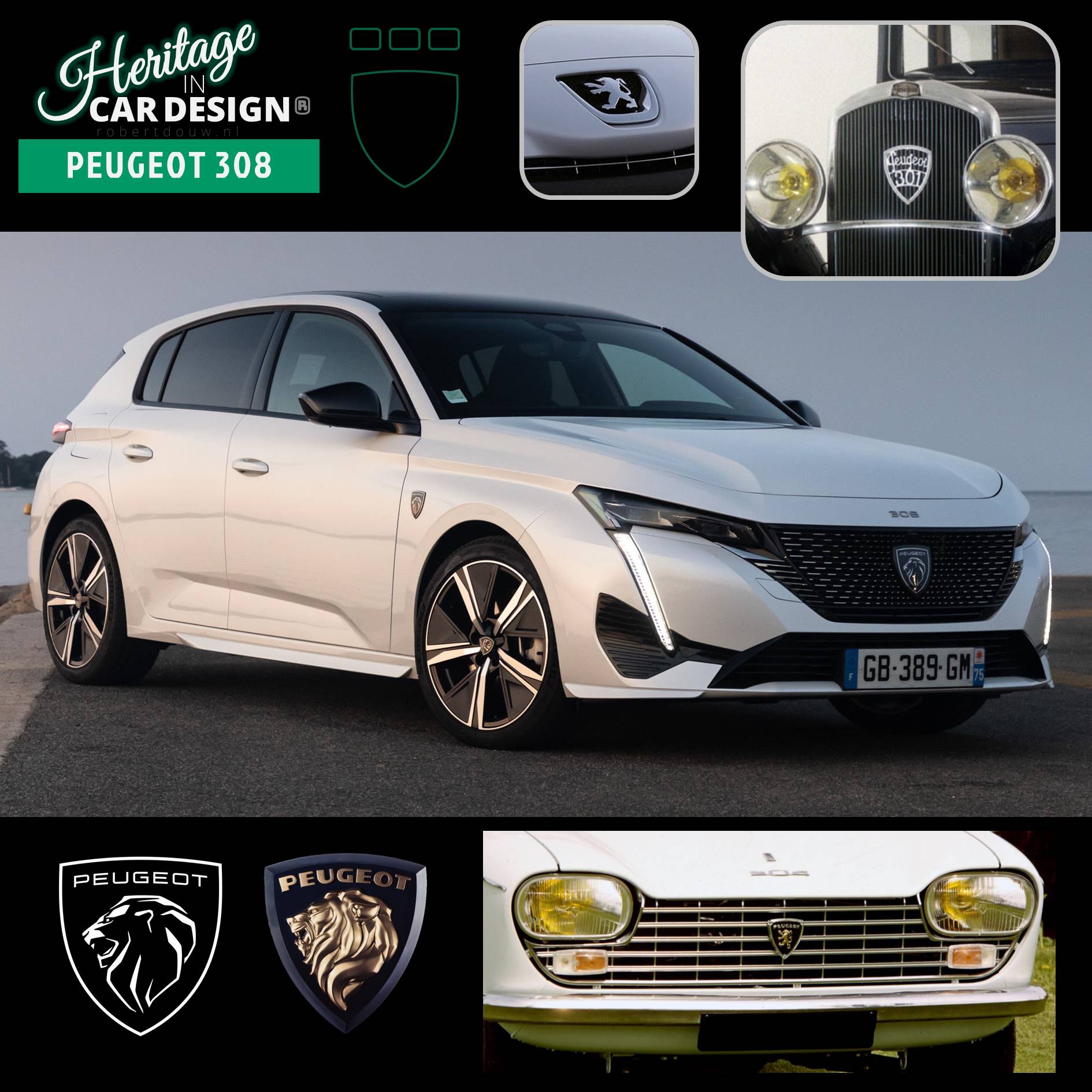
Lion on a shield
Ever since the company was founded in 1810 (when they didn't make cars yet), the Frères Peugeot used a lion as a brand symbol. That lion took different shapes on the cars. In the 1920s, for example, there was a standing lion on the nose of some versions of the Peugeot 203, while in the mid-1930s there was a three-dimensional lion's head at the top of the grille of the 302 and 402. For nearly 50 years, a standing lion has graced the front of every Peugeot. In February 2021, Peugeot presented a new logo: a shield bearing the brand name and a lion's head. It takes some getting used to, but it is very historically justified.
On the 301, the lion was missing, but there was a shield on the grille with the brand name and type designation. The brand used this shield shape more often, for example with the logo that served as direct inspiration for the latest one. That logo dates back to the early 1960s. According to l'Argus, it debuted on the 404, but none of the images I've been able to find show that logo on a car. There was a logo in the shape of a shield on the front of the 404, but it already had the standing lion on it, then still gold-coloured, as on the 204 in the image.
From the introduction of the 504 in 1968, the type designation was above the logo on the bonnet. The second-generation 508 is the first contemporary production Peugeot to have that again; the new 308 is the first to combine it with a shield-shaped logo. Incidentally, the first 308, like other models of the time, had a chrome-colored frame on three sides of a black plane just behind the logo, which you could see as a free interpretation of a shield with a lion on it.
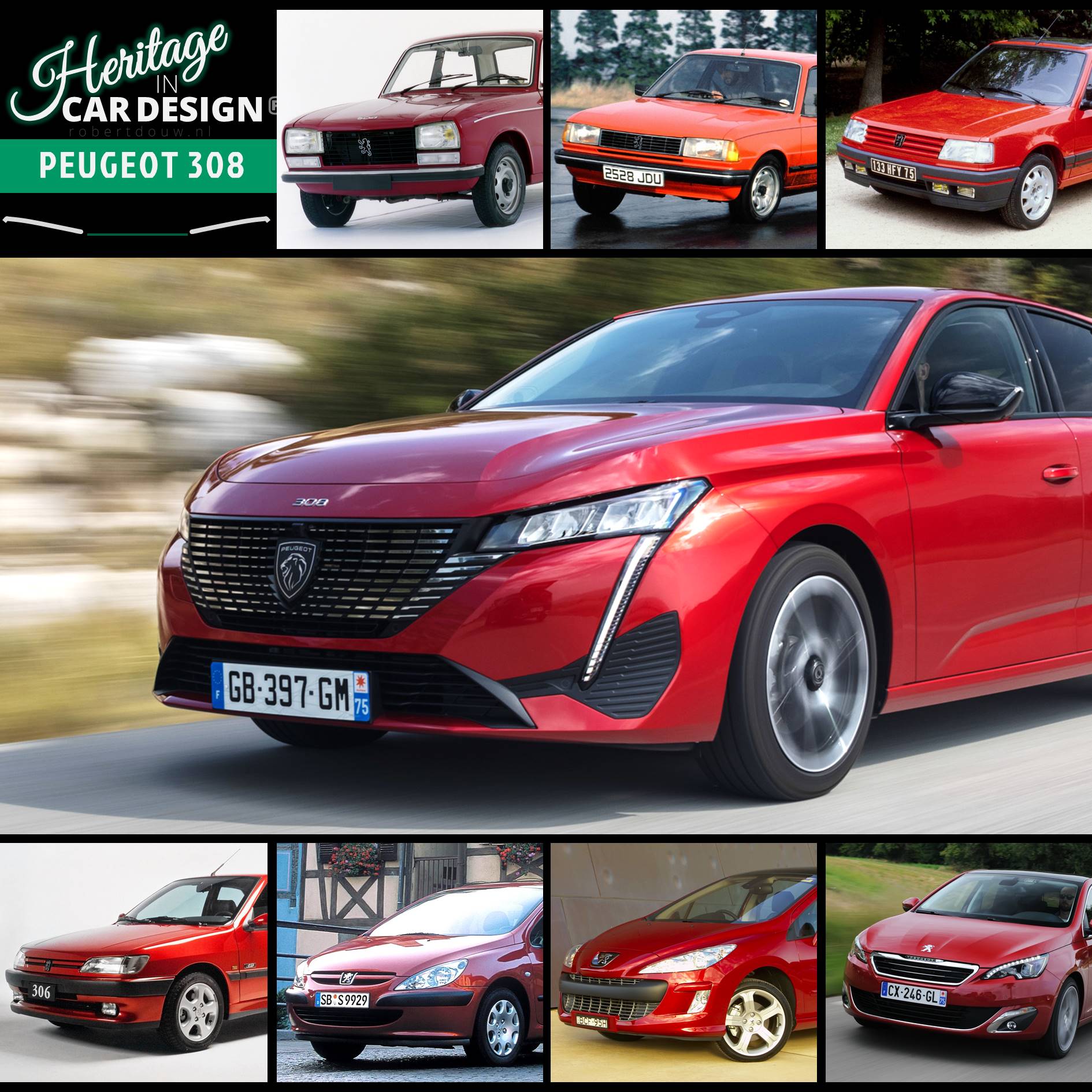
Angry look
From the moment Peugeot moved away from round headlights in the mid-1960s, the front of almost every model was fitted with light units with an inward sloping diagonal line at the top. In Peugeot's 300 series, the 304 was therefore the first to be subject to this (there was never a 303 and the production of the 302 already stopped before the Second World War). On the 305, the look got a little less 'angry' and the 309 almost had a neutral look - but that was therefore originally intended to be a Talbot.
The light units of the 306 were again designed a lot sharper. On the 307 and the first 308 - and other Peugeots of the time - the diagonal line became so oblique that you would call it the inner rather than the upper line. With the second 308, Peugeot returned somewhat to the style of the 306, while the headlights of the latest 308, because of the angle under which the diagonal line is and because the headlights sit directly against the grille, remind me most of the 304. And with that we have come full circle.
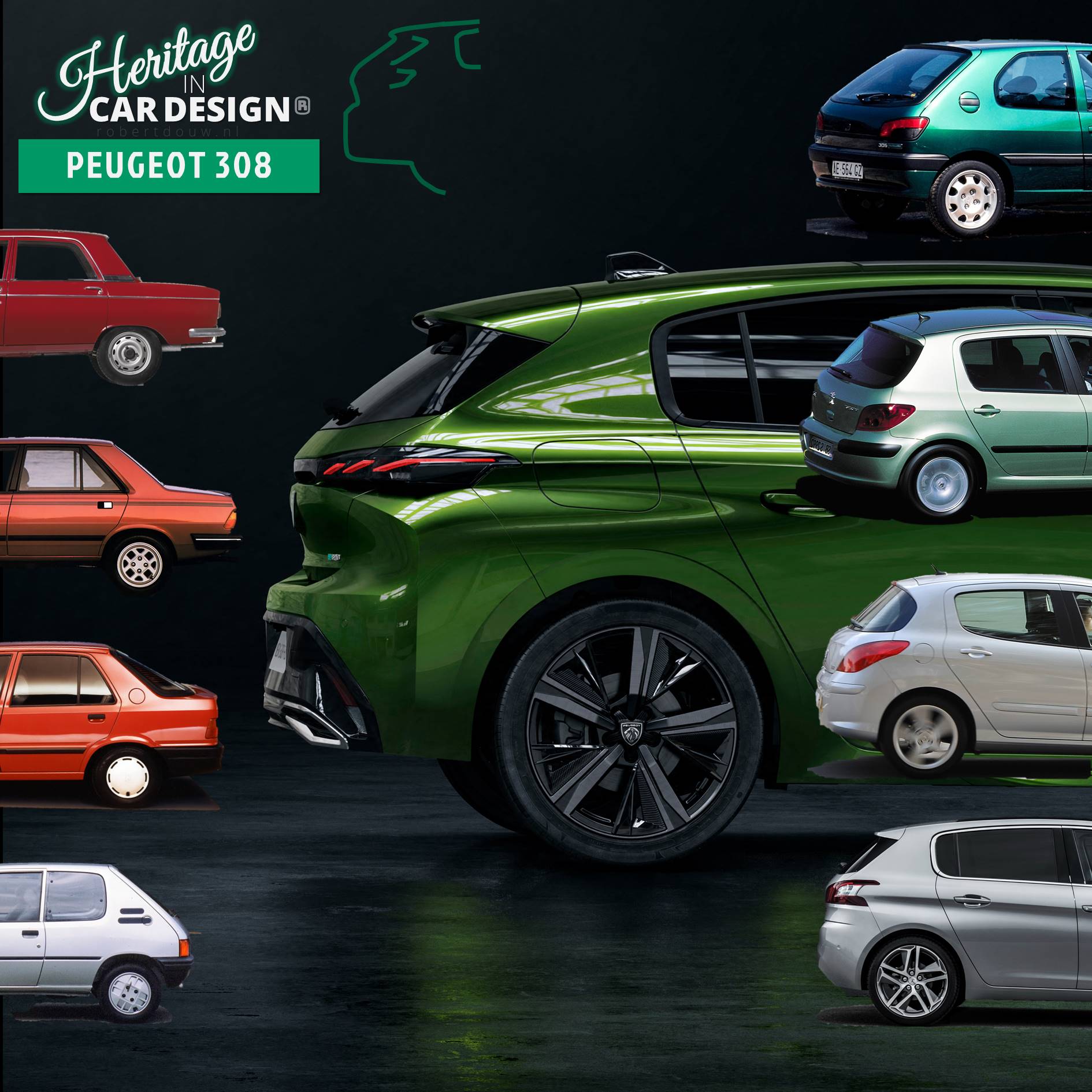
A berline isn't always the same
Although the French like to call both sedans and hatchbacks berline, there is of course a clear difference between the two body styles. The 304 and 305 were true sedans: four-door cars with a boot. The 309 was a hatchback, but the design was somewhat reminiscent of a sedan with an extra large rear window. This in contrast to its contemporary 205, which was a real hatchback.
From the 306 onwards, Peugeot also chose the same hatchback recipe for the 300 series. Since the 306 was originally intended together with the 106 to be a successor to the 205, that is a logical choice. When the 306 was developed, many competitors (like the Citroën BX, Renault 19, Opel Kadett, Ford Escort and Toyota Corolla) still had a liftback shape, with a flatter rear window. The choice for a real hatchback was therefore less obvious than it may seem now.
From the 306 to the current 308, every berline was a real hatchback, all with the rear lights halfway between the rear window and bumper, on the curvature of the hatchback. The shape of the rear lights, which continues over the sides, rising in a point, is also a typical characteristic of Peugeot hatchbacks. The same goes for the shape of the rear side windows, which recline slightly and have rounded corners.

Breaks and SWs
Offering a station wagon based on a C-segment hatchback seems obvious, but that's certainly not the case for every brand. For example, one of the biggest competitors of Peugeot's 300 series, the Volkswagen Golf (and before that the Beetle), was only available in an extended version from 1993. Peugeot was there early on. The 304, 305, 306, 307 and all three 308s had station wagons, although the extended body style was sometimes introduced later than the berline. The 306 Break, for example, only came on the market when the hatchbacks and sedan were facelifted.
Peugeot called the station wagon break for the 304, 305 and 306. The 307 was available as break, but also as slightly different SW. From the 308 onwards, the designation break expired and all Peugeot station wagons are called SW. In contrast to the hatchbacks, the estates and SWs have few outward similarities over the generations, except of course that there was a large third side window on each of them. The new 308 SW is the first in the line to have exactly the same rear light units as the hatchback.
The 309 is the only Peugeot in the 300 series of which a station wagon has never been supplied. Car production and design company Heuliez did come up with a proposal, with one door on one side and two on the other, but it was never put into production. A less eccentric 309 Break never came either - in that too the confusingly numbered 309 is out of step.
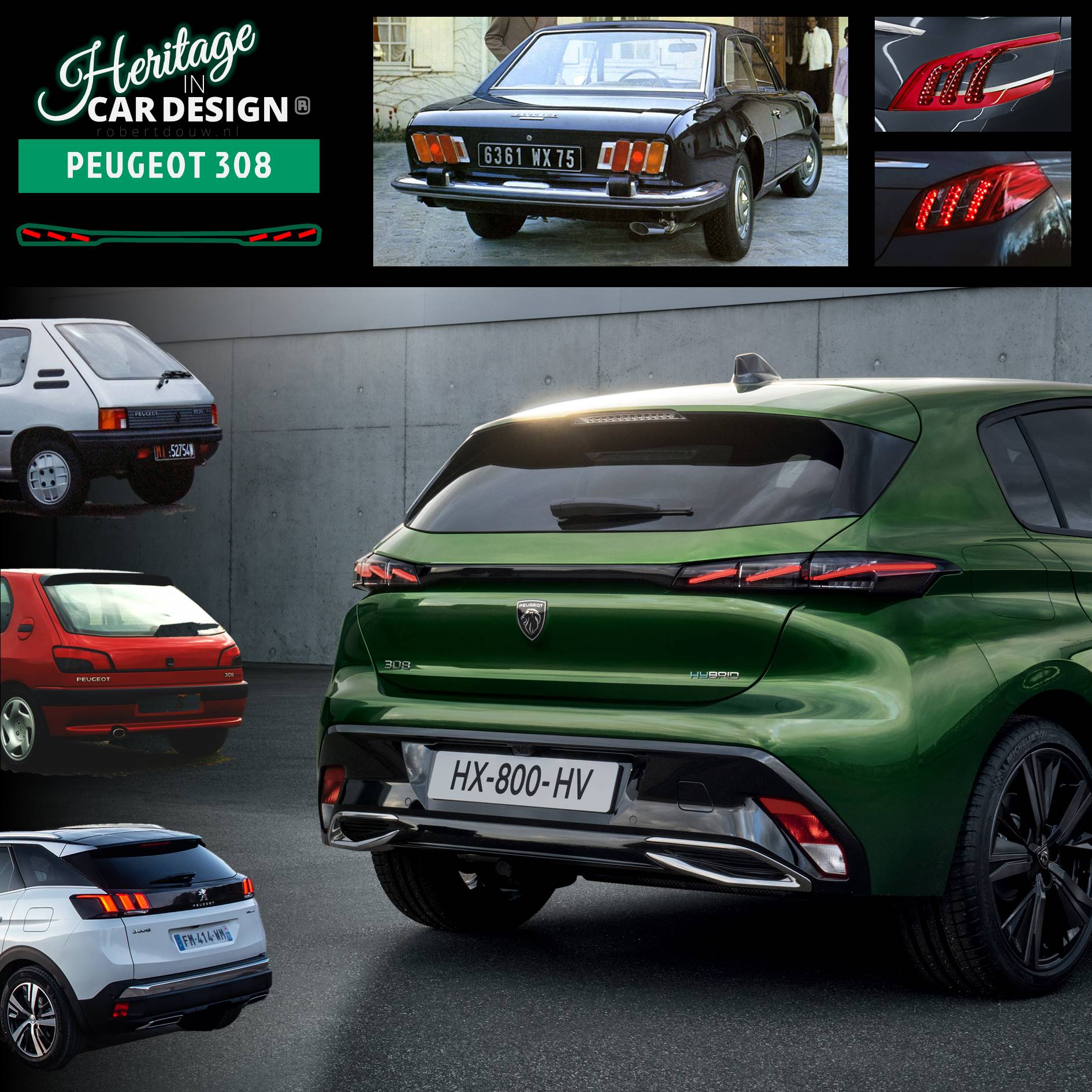
Lion's claw and black bar
Also on the back of the new 308 you can find quite a few references to the Peugeot heritage. The most striking of these is probably the light signature with three red "stripes". That goes all the way back to the 504 Coupé and Cabriolet, which had three standing light elements on either side. That idea returned for the first time on the Concept 5 by Peugeot from 2010. In the development to production model 508, the three LED stripes were incorporated into the light unit. From then on, almost every new Peugeot (the 308 SW from 2014 was an exception) was provided with that light signature, reminiscent of the scratches of a lion's claw.
Another element that has made a comeback in a slightly different guise is the black bar between the rear lights. The 205, 309 and 405 had a ribbed black plastic bar between the taillights. With the facelifts of those models, the bar already expired. The 306 still lacked that bar, but the rubber frame under the lid was slightly thicker than usual, making it a line connecting the taillights.
The second generation 3008 is the first contemporary Peugeot (not counting concept cars) that was equipped with a shiny black bar between the rear lights. From then on, every new Peugeot was equipped with this - until the recent introduction of the new 308 SW. Perhaps the black bar will again only last one generation this time, although it has already survived the facelift of the 3008 and 5008. Time will tell...

Lion on a shield
Ever since the company was founded in 1810 (when they didn't make cars yet), the Frères Peugeot used a lion as a brand symbol. That lion took different shapes on the cars. In the 1920s, for example, there was a standing lion on the nose of some versions of the Peugeot 203, while in the mid-1930s there was a three-dimensional lion's head at the top of the grille of the 302 and 402. For nearly 50 years, a standing lion has graced the front of every Peugeot. In February 2021, Peugeot presented a new logo: a shield bearing the brand name and a lion's head. It takes some getting used to, but it is very historically justified.
On the 301, the lion was missing, but there was a shield on the grille with the brand name and type designation. The brand used this shield shape more often, for example with the logo that served as direct inspiration for the latest one. That logo dates back to the early 1960s. According to l'Argus, it debuted on the 404, but none of the images I've been able to find show that logo on a car. There was a logo in the shape of a shield on the front of the 404, but it already had the standing lion on it, then still gold-coloured, as on the 204 in the image.
From the introduction of the 504 in 1968, the type designation was above the logo on the bonnet. The second-generation 508 is the first contemporary production Peugeot to have that again; the new 308 is the first to combine it with a shield-shaped logo. Incidentally, the first 308, like other models of the time, had a chrome-colored frame on three sides of a black plane just behind the logo, which you could see as a free interpretation of a shield with a lion on it.

Angry look
From the moment Peugeot moved away from round headlights in the mid-1960s, the front of almost every model was fitted with light units with an inward sloping diagonal line at the top. In Peugeot's 300 series, the 304 was therefore the first to be subject to this (there was never a 303 and the production of the 302 already stopped before the Second World War). On the 305, the look got a little less 'angry' and the 309 almost had a neutral look - but that was therefore originally intended to be a Talbot.
The light units of the 306 were again designed a lot sharper. On the 307 and the first 308 - and other Peugeots of the time - the diagonal line became so oblique that you would call it the inner rather than the upper line. With the second 308, Peugeot returned somewhat to the style of the 306, while the headlights of the latest 308, because of the angle under which the diagonal line is and because the headlights sit directly against the grille, remind me most of the 304. And with that we have come full circle.

A berline isn't always the same
Although the French like to call both sedans and hatchbacks berline, there is of course a clear difference between the two body styles. The 304 and 305 were true sedans: four-door cars with a boot. The 309 was a hatchback, but the design was somewhat reminiscent of a sedan with an extra large rear window. This in contrast to its contemporary 205, which was a real hatchback.
From the 306 onwards, Peugeot also chose the same hatchback recipe for the 300 series. Since the 306 was originally intended together with the 106 to be a successor to the 205, that is a logical choice. When the 306 was developed, many competitors (like the Citroën BX, Renault 19, Opel Kadett, Ford Escort and Toyota Corolla) still had a liftback shape, with a flatter rear window. The choice for a real hatchback was therefore less obvious than it may seem now.
From the 306 to the current 308, every berline was a real hatchback, all with the rear lights halfway between the rear window and bumper, on the curvature of the hatchback. The shape of the rear lights, which continues over the sides, rising in a point, is also a typical characteristic of Peugeot hatchbacks. The same goes for the shape of the rear side windows, which recline slightly and have rounded corners.

Breaks and SWs
Offering a station wagon based on a C-segment hatchback seems obvious, but that's certainly not the case for every brand. For example, one of the biggest competitors of Peugeot's 300 series, the Volkswagen Golf (and before that the Beetle), was only available in an extended version from 1993. Peugeot was there early on. The 304, 305, 306, 307 and all three 308s had station wagons, although the extended body style was sometimes introduced later than the berline. The 306 Break, for example, only came on the market when the hatchbacks and sedan were facelifted.
Peugeot called the station wagon break for the 304, 305 and 306. The 307 was available as break, but also as slightly different SW. From the 308 onwards, the designation break expired and all Peugeot station wagons are called SW. In contrast to the hatchbacks, the estates and SWs have few outward similarities over the generations, except of course that there was a large third side window on each of them. The new 308 SW is the first in the line to have exactly the same rear light units as the hatchback.
The 309 is the only Peugeot in the 300 series of which a station wagon has never been supplied. Car production and design company Heuliez did come up with a proposal, with one door on one side and two on the other, but it was never put into production. A less eccentric 309 Break never came either - in that too the confusingly numbered 309 is out of step.

Lion's claw and black bar
Also on the back of the new 308 you can find quite a few references to the Peugeot heritage. The most striking of these is probably the light signature with three red "stripes". That goes all the way back to the 504 Coupé and Cabriolet, which had three standing light elements on either side. That idea returned for the first time on the Concept 5 by Peugeot from 2010. In the development to production model 508, the three LED stripes were incorporated into the light unit. From then on, almost every new Peugeot (the 308 SW from 2014 was an exception) was provided with that light signature, reminiscent of the scratches of a lion's claw.
Another element that has made a comeback in a slightly different guise is the black bar between the rear lights. The 205, 309 and 405 had a ribbed black plastic bar between the taillights. With the facelifts of those models, the bar already expired. The 306 still lacked that bar, but the rubber frame under the lid was slightly thicker than usual, making it a line connecting the taillights.
The second generation 3008 is the first contemporary Peugeot (not counting concept cars) that was equipped with a shiny black bar between the rear lights. From then on, every new Peugeot was equipped with this - until the recent introduction of the new 308 SW. Perhaps the black bar will again only last one generation this time, although it has already survived the facelift of the 3008 and 5008. Time will tell...
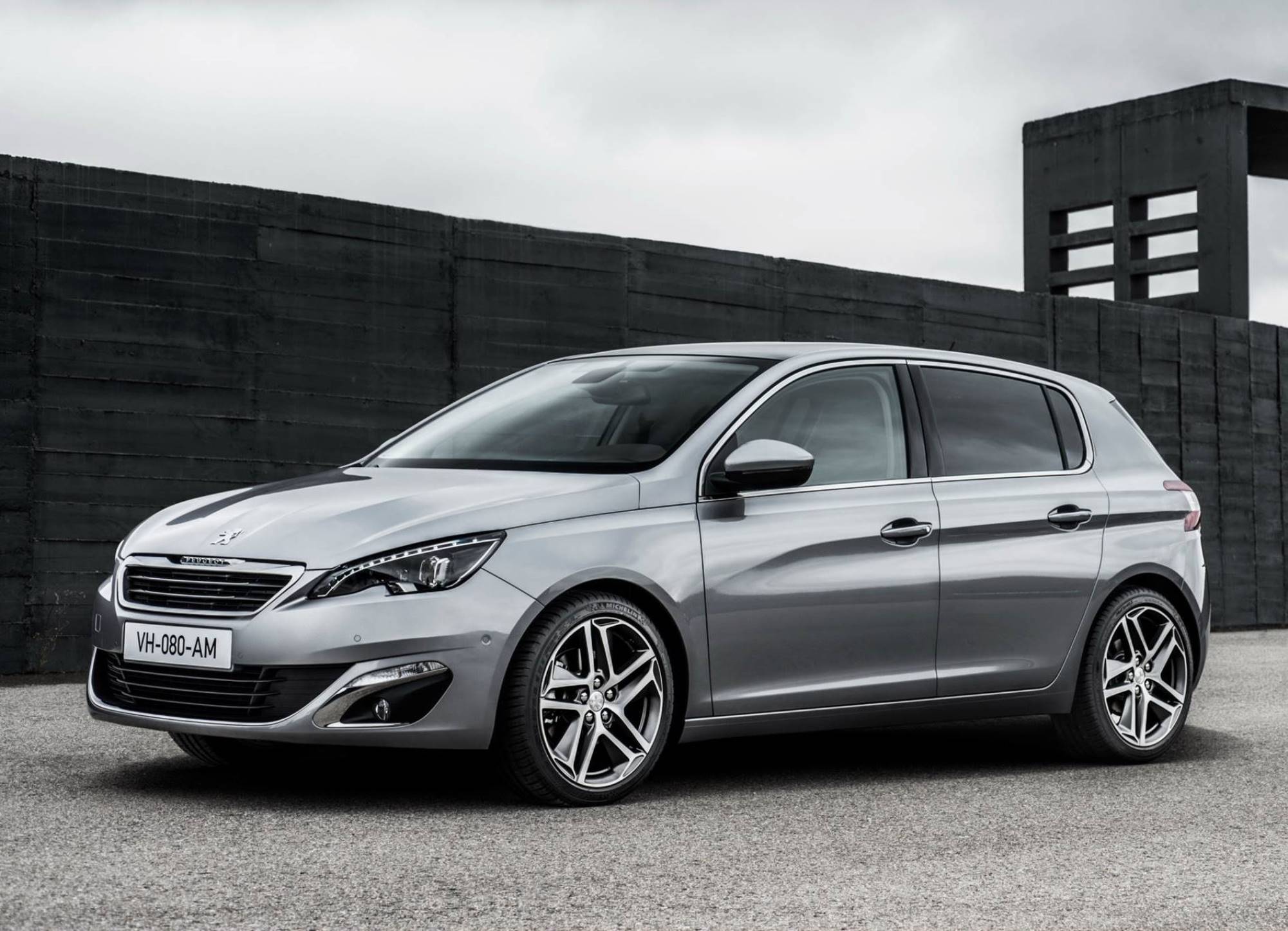
CAR OF THE YEAR TOP 50
No. 47: Peugeot 308

MY CLASSICS
Peugeot 206
CARS
Click here for an overview of everything in the Cars section.
